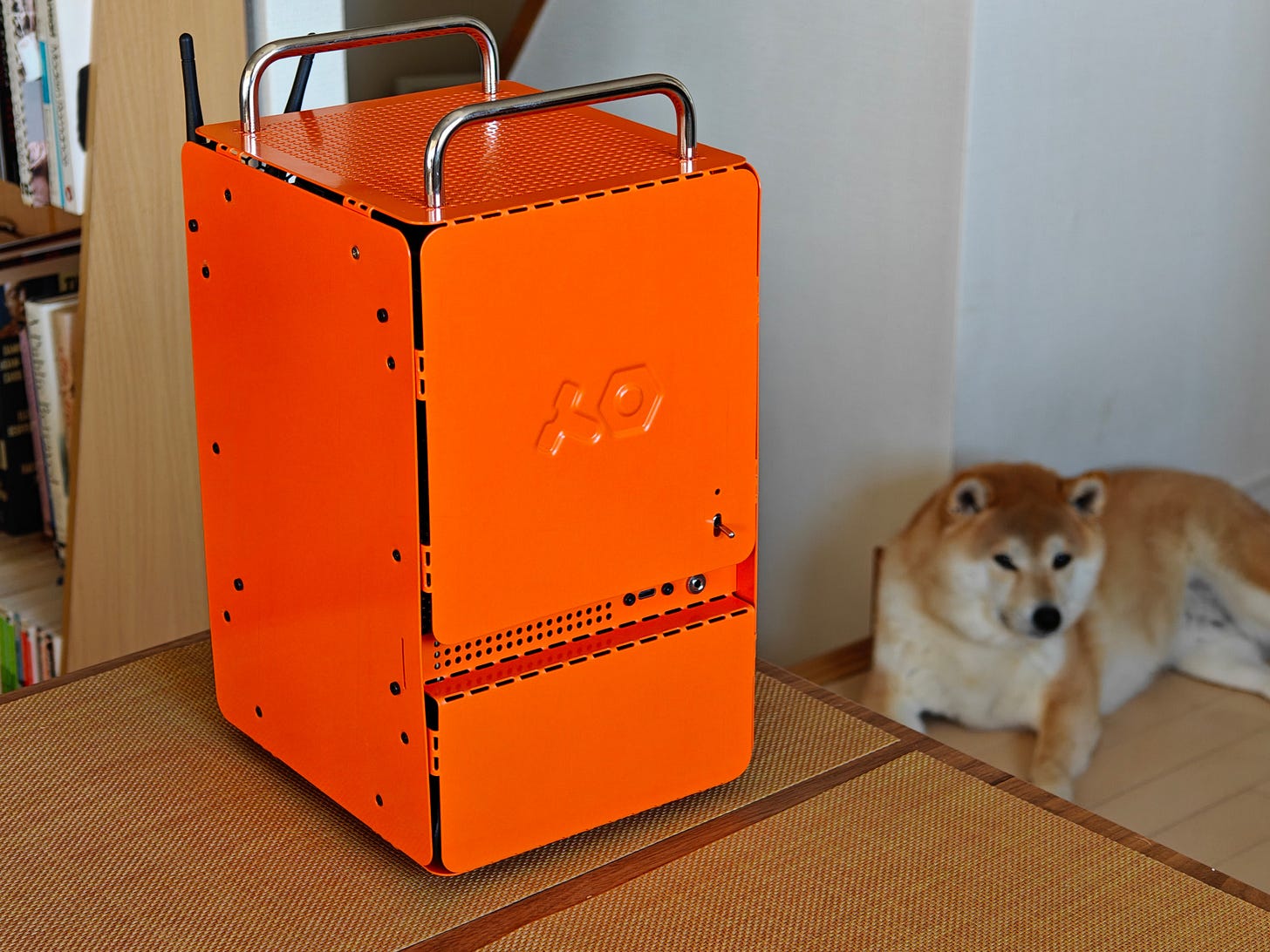Teenage Engineering's Computer-1 is impractical and wonderful
Orange is the new hack
So I finally got around to building my Teenage Engineering Computer-1.
The last time I built a PC was nearly nine years ago. It was the spring of 2016, when everyone was excited about the Nvidia GTX 1080 and the new generation of VR headsets like the Oculus Rift and the HTC Vive, so I decided to put together a rig with that in mind.
That machine handled any game I could throw at it back then, serving me well for many years. But it hasn’t been fit for purpose for a while, even for basic tasks. CPU and storage speeds are much more important now than when I built it, while the GTX 1080 is from the last generation of Nvidia GPUs not to support now-crucial technologies like ray tracing and DLSS.
Meanwhile, the price and size of high-end computer parts has skyrocketed in recent years. The GTX 1080 was both relatively accessible and the best card available when I bought mine, but the RTX 5080 and 5090 of today are comparatively gigantic and have the price and power consumption to match. In 2016, the target for most gaming enthusiasts was 1440p at 60fps, but today much higher resolutions and refresh rates are commonplace, not to mention the capacity for AI performance.
I’m actually fine with playing games at around 1440p/60fps, though, which gives me some leeway when deciding what I really need.
My goals for my next PC were as follows: it had to be affordable, compact and low-powered while making the most of modern technology. What complicated my build is that I decided on the case before anything else, and that decision was a pretty impractical one. A decision of the heart, if you will.
As you’re probably aware, Teenage Engineering is a Swedish design company known for its synthesisers as well as collaborations with the likes of Nothing, IKEA and the Playdate. The Computer-1 is a $99 Mini-ITX PC case made entirely from sheet metal that’s been powder-coated with orange paint. You have to bend the panels into shape and screw the whole thing together yourself.
Teenage Engineering says it designed this case for its own use before ultimately deciding to release it for sale to the public. Those folk must have some esoteric technical needs and a whole lot of patience, because the Computer-1 is an incredibly limiting design that can be a massive pain to assemble (and disassemble).
Unfortunately I love the way it looks, as well as the idea of a tiny Swedish flat-pack computer case in general, so I bought one a while back and started to decide on internal components one by one over the course of a year or so.
This is how it turned out.




